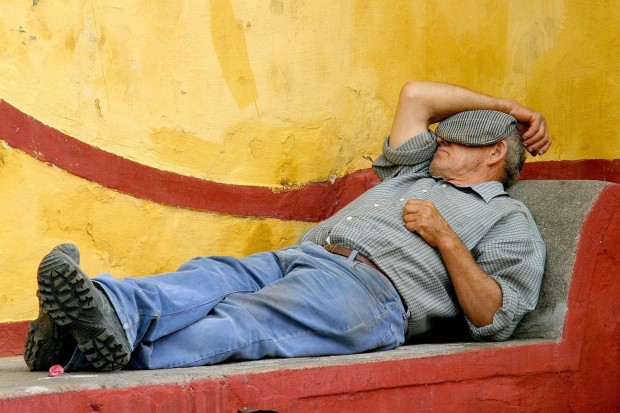While taking an afternoon nap, or siesta has been a long-standing tradition in Spain, the changing landscapes of work and life have challenged this custom in recent years. The siesta is no longer as prominent as it once was, leading many to wonder — has the siesta died a death in Spain?

The siesta is a centuries-old tradition in Spain, in which people take a break from their busy schedules to rest, relax and recharge during the hottest hours of the day. This custom is deeply rooted in Spanish culture and offers several practical benefits, including improved mood and productivity, reduced stress levels, and enhanced mental clarity.
Siestas are typically taken after the midday meal, around 2 or 3 p.m., and last anywhere from 20 minutes to a couple of hours. This break provides shelter from oppressive heat and allows the body to recover following a hearty lunch — the biggest meal of the day in Spain.
The traditional practice of taking a siesta appears to be under threat due to shifts in work culture and increasing demands on time and efficiency. In the past, businesses across Spain used to close down for a few hours during the afternoon, allowing their employees to enjoy a leisurely lunch followed by a siesta. However, global market competition, modern work schedules, and the 24/7 economy have contributed to the decline of this practice.
Nowadays, many businesses in Spain maintain a continuous workday or operate under split-shift schedules, with a shorter lunch break and a late evening finish. This new system mirrors the typical work patterns found in other European countries and the United States, leaving little room in the day for a peaceful afternoon siesta.
The traditional siesta is not the only form of an afternoon nap. The concept of the power nap — a brief 10 to 20-minute rest period — has become increasingly popular. Several studies have praised the benefits of a power nap in boosting energy, creativity, and alertness.
In response to this trend and the demands of modern life, some companies in Spain and other countries have implemented power nap rooms or lounges within their offices. Workers can take advantage of a quiet and comfortable space to recharge during their workday. This approach helps address employee wellness and productivity issues, without disrupting the flow of the workday.
Though the siesta may be less embedded in daily life, it still remains a cherished Spanish custom for some. On weekends, public holidays, and in rural areas, you can still experience the hallmark of the Spanish lifestyle through a longer, leisurely meal followed by a relaxing siesta.

However, the practice of siestas during the workweek is indeed waning as work schedules evolve and the expectations of the global market shape the Spanish business landscape. While the traditional siesta may be fading, the emergence of power naps suggests a new way of preserving this valuable custom and adapting it to the demands of our modern lives.